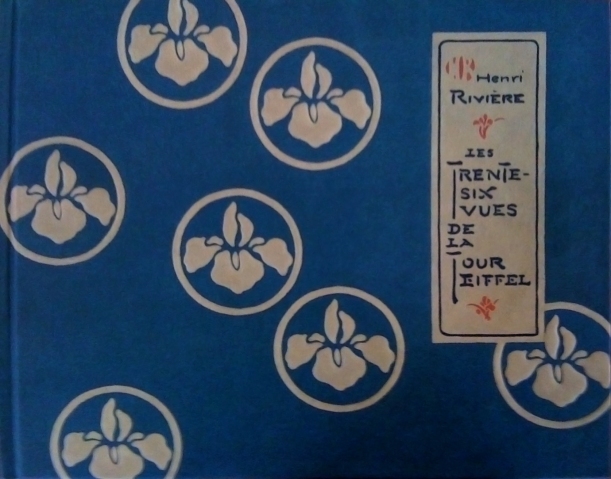I recently visited the Impressionist and Post-Impressionist Masterpieces from the National Gallery of Art exhibit at the MFAH. The show was spectacular. However, this post is not about the exhibit, it is about books.

When I was browsing the books at the museum store, I happened upon Les Trente-six Vues de la Tour Eiffel by Henri Rivière. The book was published in its original format – which is what made it completely irresistible. It is in the traditional Decadent, Art Nouveau style that was initially pioneered by Whistler. The combination of text and image on the page is pervasive.


The prints, however, are large and therefore, allow for close inspection. They are inspired by Japanese wood-block prints (see Hiroshige), something that Decadent book designers were drawn to.

In order to fully appreciate the wonderful find that was this book, one has to explore Decadent book-making and design practice. The theoretical desire to meld text and image, combined with technological advancements, resulted in the creation of the adult illustrated book. Whistler pioneered the aestheticized book in his objet d’art publications such as The Gentle Art of Making Enemies. Whistler’s combination of text and image in a compositionally balanced design inscribed the book within aesthetic discourse. Subsequent publications of “little magazines” such as The Chameleon, The Yellow Book, and The Savoy continued the trend begun by Whistler. These publications elevated images, traditionally relegated to a secondary position, to the level of text.
The creators of the little magazines tried to unite visual and written art in order to highlight their belief in the possibility of combining diverse arts and paving the way for a new form of art.[1] These magazines were the ultimate mode of Decadent expression and, due to their careful attention to composition, their target audience was the aesthete.
I also ordered painter Odd Nerdrum’s book How We Cheat Each Other and it just arrived in the mail. Nerdrum is a fantastic artist and I cannot wait to delve into his writing – after all, we are both representational artists who write! Below is a photograph of the book on the table my grandfather made.

[1]. Murray G.H. Pittock, Spectrum of Decadence: The Literature of the 1890s (London: Routledge, 1993), 57.
